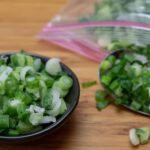Ginger has an incredibly high nutritional value and is a familiar spice in many family meals. Apart from its ability to neutralize fishy odors, it also adds a hearty and delicious flavor to dishes. That’s why ginger is an indispensable spice in every family’s kitchen.

Ginger is an essential spice in many Vietnamese households. (Photo: Sohu)
Due to the high demand for ginger, some sellers dip it in sulfur to prolong its shelf life and enhance its appearance. This type of treated ginger not only has a less appealing flavor but can also be detrimental to one’s health if consumed regularly.
Identifying Safe and Chemical-Free Ginger
To choose safe and chemical-free ginger, consider the following tips:
Closely Examine the Ginger’s Skin

The skin of a delicious ginger root will be rough and dull in color. (Photo: Sohu)
The skin of a ginger root is typically rough and dull, with distinct surface veins. When fresh, the root still has dirt on it. In contrast, sulfur-treated ginger has a bright, shiny, and eye-catching appearance, with a smooth and delicate skin due to the sulfur smoke treatment.
According to experienced ginger growers, the uglier a ginger root looks, the safer and more delicious it tends to be.
Smell the Ginger
When purchasing ginger, it is essential to use your sense of smell. Regular ginger has a slightly spicy and pungent aroma. If you smell sulfur-treated ginger, you may not perceive the typical ginger scent or may detect a faint sulfurous odor.
Rub Your Hand on the Ginger’s Skin
When selecting ginger, try gently rubbing your hand on its skin. If the ginger has been treated with sulfur, the skin will feel soft and fragile, and the skin will easily peel off with light rubbing. In contrast, the skin of untreated ginger is relatively tough and firmly attached to the flesh, making it difficult to peel off even with vigorous rubbing.
Observe the Color of the Inner Ginger

How to identify safe and chemical-free ginger: Check the color of the flesh. (Photo: Sohu)
When buying ginger, break off a piece to inspect the inside. Safe and untreated ginger will have both skin and flesh in a deep yellow color. In contrast, sulfur-treated ginger has bright yellow skin but a deeper yellow flesh.
Press the Ginger
Another way to identify safe and chemical-free ginger is to use your thumb or finger to press into the ginger root. If it feels soft, it may be spoiling or has been treated with chemicals to prolong its shelf life. Fresh and safe ginger will feel firm, and it should be challenging to press your fingernail into it.
Also, avoid purchasing ginger that is damaged, rotten, or sprouting. Breakage during transportation can introduce bacteria, leading to mold and rot. Additionally, storing ginger at excessively high temperatures can cause it to sprout; this type of ginger should be avoided as it contains the toxic compound safrole, which is harmful to health.
According to VTC News






































